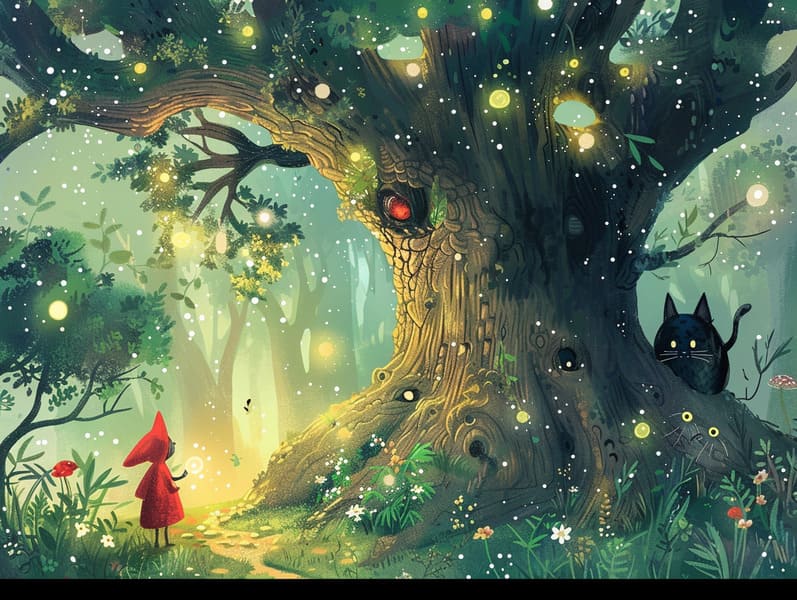The Origins of Popular Fairy Tales with Their Persistent Beauty.
The Origins of Popular Fairy Tales with Their Persistent Beauty.
Blog Article

Short fairy tales have long histories. These tales have been relayed from one generation to the next ages before they were ever recorded. They arose from a variety of backgrounds, including African traditions. They were initially transmitted among older generations, often carrying themes and messages relevant to the societal norms and beliefs of the time.
The Brothers Grimm, Jacob and Wilhelm (the Grimm brothers), were among the first to compile many of these beloved stories. Their published works, "Grimm's Fairy Tales," included tales like "The Story of Cinderella," "Hansel and Gretel," and "Snow-White and Rose-Red," which have since become staples in the world of traditional fairy tales. Similarly, H. C. Andersen's fantastical fairy tales, such as "The Little Mermaid," and "The Little Duckling," have captured hearts worldwide, securing their place in the pantheon of beloved fairy tales.
Though they are centuries old, classic fairy tales remain as relevant as ever, especially as children's bedtime stories. These magical stories are now available in diverse formats, including artistically illustrated books, whimsical animations, and digital storybooks.
Their unwavering allure can be connected to several fascinating points:
Key Lessons: Ancient fairy tales often illustrate important moral lessons. Stories like "The Wolf and the Liar" teach the virtue of integrity, while "The Story of the Tortoise and the Hare" demonstrate the values of persistence and humility. These stories offer children clear distinctions between right and wrong, guiding their moral compass in a kind yet profound way.
Warmth and Understanding: Traditional fairy tales frequently present personalities facing obstacles and hardships, provoking readers to sympathize with their struggles and back their triumphs. For instance, "The Story of Beauty and the Beast" conveys the virtue of seeing beyond the surface to acknowledge the inner spirit of a soul, advancing warmth and recognition.
Cultural Recognition: Many timeless fairy tales are deeply embedded in the cultural contexts from which they bloomed. Reading these narratives can provide delightful insights into different social structures, fostering a sense of world understanding and comprehension.
Fantasy and Innovation: The enchanted elements in ancient fairy tales—wizardry and magic—stimulate children’s innovative ideas. These stories take readers to extraordinary realms, provoking inventive ideas and a sense of fascination that remains a lifetime.
Traditional fairy tales are not only enchanting but also pedagogical. They work as mesmerizing tools in promoting various brain and heart skills in kids. When traditional fairy tales are spoken out loud, they develop language skills by bringing new terms and sophisticated sentence structures. This practice also promotes hearing abilities and mental focus, as the young focus on every detail, keen to see what happens next.
Furthermore, discussing the themes and characters of traditional fairy tales can cultivate thought processes and thinking skills. Young readers are taught to see patterns, foresee events, and know cause and effect. These explorations also boost kids reveal their thoughts and feelings, strengthening their emotional intelligence.
In today’s technological era, the availability of online storybooks has made these stories more available than ever. Online resources and programs feature large libraries of famous fairy tales that can be experienced or listened to anytime, anywhere. Fairy tales spoken are particularly well-liked, providing an immersive method for little ones to immerse in these enchanting tales. Read-aloud books and spoken videos move characters and settings to life, often paired with spellbinding harmonies and soundtracks that raise the narrative experience.
The unending appeal of ancient fairy tales lies in their ability to change to changing times while continuing with their central messages. Contemporary retellings of these stories often showcase more inclusive figures and modern settings, making them accessible to today’s audience. However, the main ideas of heroism, benevolence, and integrity remain unchanged, continuing to move audiences of all ages.
Fairy tales also offer a sense of coziness and knownness. They put forth a well-arranged narrative with a unmistakable beginning, middle, and end, often closing with the culmination of conflicts and the triumph of virtue over corruption. This foreseeability can be reassuring for young readers, introducing a sense of solidity in an variable world.
Timeless fairy tales continue to captivate and coach new generations, maintaining their radiance and meaningfulness in modern society. As kids' bedtime tales, they highlight a perfect blend of fascination and comprehension, backing moral values, empathy, and creativity. The accessibility of online storybooks and the sought after status of fairy tales narrated affirm that these timeless stories remain within reach to new generations.
By retaining and telling these tales, we click here continue to esteem the rich tapestry of fables and cultural heritage. Whether you are reading a colorful picture book, experiencing a internet library, or hearing an sound book, the allure of old fairy tales is always within reach. These tales teach us of the lasting strength of storytelling and its ability to bind us across eras and regions.
Regardless if you are browsing a colorful picture book, seeing a digital library, or listening on an read-aloud story, the beauty of bedtime fairy tales is always within reach.
These narratives illustrate of the unchanging nature of fairy tales and its ability to hold us together across time and space, forming a connection that captivates and teaches alike.